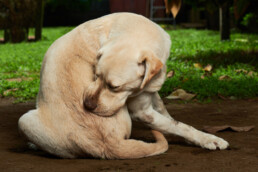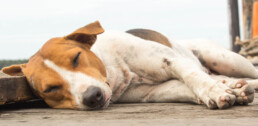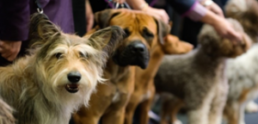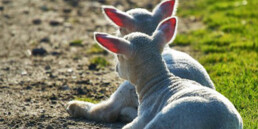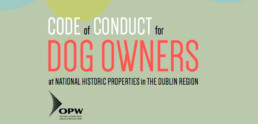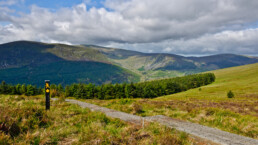How to protect your dog against ticks and fleas
Although it is impossible to completely keep ticks and fleas at bay, there are some steps you can take to help minimise their contact with your pet.
Fleas
There are a few things you can do to reduce the chances of your pet getting fleas:
- Frontline – You can use this treatment from Frontline to prevent and treat your pets against fleas. They recommend treating cats every 5 weeks and dogs every two months.
- Vacuum – One of the most overlooked areas is just vacuuming your house on a regular basis. This will reduce the number of flea eggs and larvae that are present.
- Flea shampoo – You can use flea shampoo as both a preventative measure and a cure. Bathing your pets with flea shampoo can significantly reduce the chances of infection and can go a long way to curing them of it. However, make sure you don’t do this too much as it can dry out your pets skin.
- Wash your pets bedding – It’s important to ensure all bedding, blankets or collars that your pet wears are regularly cleaned.
- Consult your veterinarian – When it comes to any treatment for your pets, always consult your vet. This will help you to understand what fleas are, what treatments are suitable for your pets and what to do in the event that your pet gets fleas.
Ticks
Dogs are very susceptible to tick bites and tick-borne diseases. Tick bites on dogs may be hard to detect. Signs of tick-borne disease may not appear for 7-21 days or longer after a tick bite, so watch your dog closely for changes in behavior or appetite if you suspect that your pet has been bitten by a tick.
To reduce the chances that a tick will transmit disease to you or your pets:
- Check your pets for ticks daily, especially after they spend time outdoors.
- If you find a tick on your dog, remove it right away.
- Ask your veterinarian to conduct a tick check at each exam.
- Talk to your veterinarian about tickborne diseases in your area.
- Reduce tick habitat in your yard.
- Talk with your veterinarian about using tick preventives on your pet.
Use a flea and tick control product
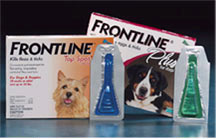 Despite your best efforts to reduce your dog's contact with ticks and fleas, you should still take measures to help protect them. Treat all dogs and cats in the household with a flea and tick control product. One untreated pet can lead to a flea infestation in the household. Flea and tick control products can help protect your dog from unexpected flea and tick sources by killing adult fleas, eggs and larvae, and all stages of ticks.
Despite your best efforts to reduce your dog's contact with ticks and fleas, you should still take measures to help protect them. Treat all dogs and cats in the household with a flea and tick control product. One untreated pet can lead to a flea infestation in the household. Flea and tick control products can help protect your dog from unexpected flea and tick sources by killing adult fleas, eggs and larvae, and all stages of ticks.
Once-a-month topical insecticides are the most commonly used flea prevention products on the market. They are applied to a small area on your pet's back, are probably the easiest product to use, and generally last the longest. Some kill fleas and ticks, and others just kill fleas, so check the label carefully. Ingredients generally include permethrin, fipronil, imidacloprid, pyriproxyfen, spinosad, metaflumizone, and selamectin.
This is the method we use with Baxter, applying the dose to an area of skin at the back of his neck, where he is unlikely to reach it should he feel the need to scratch an itch.
Consistency is key to maintaining adequate protection. Even one missed dose of your dog's monthly flea and tick control can set the stage for a flea infestation that takes months to resolve, or put your pet at greater risk of exposure to a tick borne disease. So it is important that you treat your pet and continue monthly applications throughout the rest of the year or as directed by your vet.
How to help your dog through firework season
Baxter, like most dogs, finds this time of year a period of intense emotional stress brought about by the flashes and loud noises associated with fireworks.
So, we would like to share with you some of the excellent advice we received on a recent visit to the vet.
Minimizing the effect of fireworks
Up until recently, the only way of medically trying to help dogs was by the use of sedatives. However, our vet tells us that sedatives provide little if any benefit and may actually compound what is an already stressful situation.
In order to minimize the effect of fireworks on your pet, try the following advice.
- Avoid exercising your dog after dark, as this is the peak activity for fireworks.
- Ensure all curtains in the area where your pet stays are pulled shut in order to block out the flashes from fireworks.
- Turn on the radio in the room playing music at an appropriate volume so as to reduce the impact of the explosions from fireworks.
- Try no to offer sympathy to your pet. This is very hard to do, but offer sympathy may be interpreted by your dog as legitimizing their phobia.
- Do not scold or punish your dog if it shows signs of fear or anxiety.
- Provide a 'sanctuary' for your pet - a designated area where you can follow steps 2 & 3, preferably an area where your pet prefers to hide when stressed. Feed the pet in this area. The pet will recognize this area as a place of reassurance and comfort where they are less stressed by the fireworks.
Pheromone Diffusers
Our vet also suggests using a pheromone diffuser in the 'sanctuary' area. A pheromone diffuser is a plug-in diffuser similar to the room deodorants commonly used in the home. It releases into the atmosphere of the room a tiny amount of the product similar to a natural chemical produced by the bitch while feeding her pups. This has been shown to reduce anxiety, to change the way pets perceive unfamiliar environmental stimuli and to enhance social interaction.
The diffuser should be plugged in at the same height at the pet and should not be positioned behind furniture. Ideally, it should be plugged in 2 weeks in advance of the event. It should be left plugged in 24 hours a day and never unplugged, even for part of the day.
If you have any concerns about your pet during firework season, please contact your vet.
How to prepare your dog for a new baby
There’s so much to think about when you’re getting ready for a baby, but if you have a dog it’s worthwhile preparing early to ensure a safe and happy start to the relationship between your pet and your new baby.
Solve existing behavioural issues
Finding the time to do behavioural training might be difficult after baby comes, as you won’t want to be dealing with tough behaviour issues with your dog while also trying to look after a new baby. Behaviour that seems harmless now, such as your dog jumping up on you, may become dangerous if you are heavily pregnant or holding a brand new baby in your arms. If your dog has serious behaviour issues such as aggression, you may need to consult a professional dog behaviourist to help solve these issues before the arrival of your new baby.
Safe Walks
Ensure your dog walks well on a lead, without pulling, tugging you or lunging unexpectedly. This will make it easier for you to keep taking your dog out on walks if you have a pram to manage as well. So, why not try some practice walks with the pram before baby arrives, to help your dog get used to it.
Socialise
Begin socialising your dog with babies and young children, and rewarding it for any positive interactions with them. If your dog hasn’t been socialised with children much, you will need to be very cautious when you get started and keep your dog on a lead. You may also need to put a muzzle on your dog if necessary.
Baby Sounds
Desensitise your dog to baby noises beforehand so they are unfazed by the real thing when it comes along. Play recordings of babies crying, laughing and screaming to your dog on a regular basis at all times of the day. Start at a low volume, then increase the volume slowly in small increments only when your dog is acting calmly and not stressed. Reward your dog for calm behaviour while these sounds play.
Baby's sleeping space
It is important that you make the nursery off-limits to your dog. Through careful and consistent training, you should be able to condition your dog into understand this is a place they are not allowed go without you. Once your dog understands the rules, you can let them to enter the room. But, it is important to maintain enough control to send your dog out of the room when you need to. If you find it difficult to maintain this flexibility then it’s best to keep it fully off limits.
Introducing your dog to baby
To encourage a safe and peaceful introduction, try these tips:
- Have someone bring home something that smells of your baby (such as a wrap it has been wearing), so your dog can become familiar with the scent before meeting her.
- Help your dog relax by ensuring it’s taken for a long walk and has used up some energy before the introduction.
- On arriving home from hospital, greet your dog first before introducing the baby. Remember, your dog will have missed you and will be excited to see you, so doing this will help create a calm environment.
- Make sure your dog is calm before it is allowed to come near the baby. While holding your baby, gently call your dog over and allow it to sniff baby. If there is more than one dog in the household, do this with only one dog at a time.
- Reward your dog for its calm behaviour when meeting the baby. You should do this for their first few interactions to help build a positive association.
Warning signs
Learn to read your dog’s body language for any indication that it’s not happy or comfortable in a situation. If your dog growls, has its hackles raised or bares its teeth remove the child from the situation immediately. If your dog is stressed out or fearful, this is also a warning sign. Look for things such as panting, tense body language, the dog’s tail between its legs, trembling, or the dog trying to hide or escape a situation. Pay attention to these signs and remove the child if you ever see any of them.
Finally, it is important to remember that you must always supervise all interactions between a dog and a baby or young child. Even if your dog is extremely friendly and docile, babies and young children can do unexpected things and any dog can react in a negative way if it feels scared or threatened.
If your dog gives any indication that it is frightened of or aggressive to a child, immediately separate the two and consult a qualified animal behaviourist to help resolve any issues your dog may have with the situation.
What is the law on micro-chipping dogs?
As from 31st March 2016, it is compulsory for all dogs in the Republic of Ireland to be micro-chipped.
As a dog owner, there are three things you need to know about the new legislation:
- Your dog must be micro-chipped and registered on a government approved database by 31st March 2016.
- You must have a certificate from a government approved database to prove that your dog is micro-chipped and registered on that database.
- You must keep your contact details up to date. Any changes of ownership or of contact details, such as address and phone numbers, must be notified to that database.
If you are buying, selling or transferring ownership of a dog, you will also need to know the following:
- From 1st September 2015 all puppies must be micro shipped and registered with a government approved database by the time they reach 12 weeks of age or before they are moved from their birth home.
- It is illegal to buy or take ownership of a puppy that is not micro-chipped and registered on a government approved database and that does not have a certificate from the database to prove this.
- You must inform a government approved database when you buy, sell, take ownership or transfer ownership of a dog.
If your dog is already micro-chipped, you still need to make sure your details are stored correctly on a government approved database and that you have a certificate to prove this.
New law on micro-chipping your dog
In the Republic of Ireland from 31st March 2016, it will be compulsory for all dogs to be microchipped.
As a dog owner, there are three things you need to know about the new legislation:
- Your dog must be microchipped and registered on a government approved database by 31st March 2016.
- You must have a certificate from a government approved database to prove that your dog is microchipped and registered on that database.
- You must keep your contact details up to date. Any changes of ownership or of contact details, such as address and phone numbers, must be notified to that database.
If you are buying, selling or transferring ownership of a dog, you will also need to know the following:
- From 1st September 2015 all puppies must be micro shipped and registered with a government approved database by the time they reach 12 weeks of age or before they are moved from their birth home.
- It is illegal to buy or take ownership of a puppy that is not microchipped and registered on a government approved database and that does not have a certificate from the database to prove this.
- You must inform a government approved database when you buy, sell, take ownership or transfer ownership of a dog.
If your dog is already microchipped, you still need to make sure your details are stored correctly on a government approved database and that you have a certificate to prove this.
The lambing season approaches, so dog owners need to be vigilant
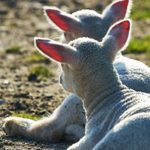
With lambing season approaching, it is time for us as dog owners to be vigilant and not let our pets near farms.
With spring just around the corner, here at Petfriendly Ireland we are gearing up for a year of new adventures and planning some great dog friendly walks around the country.
However, with spring also comes lambing season, which means it is also time for us to be vigilant when out walking with with our dogs in the countryside.
All dogs, from family pets to working dogs, can potentially cause a lot of distress and damage if they are not kept under control. At this time of year, sheep flocks have a lot of heavily pregnant ewes, many of which will start lambing in the coming weeks and months.
Sheep worrying by dogs can be a massive concern at this time of year. Even seemingly harmless family pets can cause serious damage if they turn on a flock of sheep.
A dog attack on a sheep flock is extremely stressful and can inflict savage injuries, often fatal. Aside from the economic losses for the farmer, for which dog owners can be held liable, the welfare implications for the flock can be very severe and long-lasting. Sheep never recover fully from a dog attack and can suffer ongoing difficulties, including reproduction problems and increased nervousness.
With up to 2.5 million lambs on 30,000 sheep farms across the country expected to be born by the end of the lambing season this year, it's important that we don't let our dogs cause any unnecessary stress for the sheep.
So, it's important that we keep the safety of the sheep flocks in mind and follow two simple rules when walking with our dogs near farmland:
- keep to the footpaths
- keep our dogs on leads at all times
Code of Conduct for dog owners visiting Dublin's parks and gardens
The OPW have issued a Code of Conduct for all dog owners visiting national historic properties in Dublin with their dogs.
The Code of Conduct for Dog Owners identifies specific areas within the OPW's twelve parks and gardens in Dublin where dogs are not permitted or must be kept on a lead. The parks and gardens included are St Stephen's Green, Iveagh Gardens, National War Memorial Gardens, Grangegorman Military Cemetary, Arbour Hill Cemetary, Pheonix Park, Royal Hospital Kilmainham, National Botanic Gardens, St Enda's Park, Rathfarnham Castle, Garden of Remembrance and Castletown House.
For full details and to download a PDF copy of the OPW's Code of Conduct for Dog Owners, please click here
Are there any restrictions on dog breeds in Ireland?
Are there any restrictions on dog breeds in Ireland?
Yes, the Irish government has placed a number of restrictions on certain breeds of dogs. You can read more here.
Do I need to license my dog?
By law all dogs in Ireland over the age of 4 months must have a licence.
Dog licences are issued by post offices or local authorities. The revenue from them finances the operation of dog control services.
In order to obtain a dog licence, you must be over 16 years of age.
All dogs over 4 months of age must have a licence. Puppies under 4 months who are still with their mothers do not need licences but once they leave their mothers they must have a licence.
Your dog must be accompanied by and be under your effective control or the control of another responsible person if it is outside your home or premises or the home or premises of the person in charge of it.
A dog warden can ask you to produce evidence of your dog licence and failure to do so can result in an on the spot fine. Failure to pay this fine within a specified period can result in prosecution by the local authority.
If you arer found to have a dog with no dog licence then you will receive an on the spot fine of €30 payable to your local authority. If this fine is not paid it lead to prosecution in the District Court with a maximum fine of €1904.61 and/or 3 months imprisonment.
An individual dog licence costs €12.70 and is valid for one year.
'Rules' of the Way: Walking Your Dog in the Wicklow Mountains
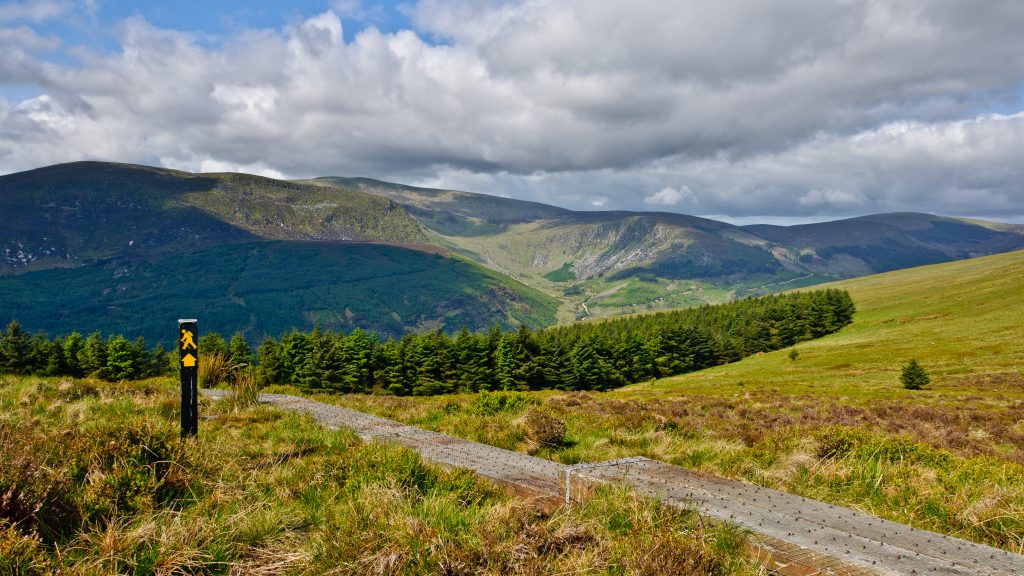
With over 20,000 hectares of spectacular upland scenery, The Wicklow Mountains National Park offers walkers a real sense of being in the wilderness. The National Park offers an open access policy allowing visitors to explore freely on foot. Which means it's important for dog owners to act responsibly.
If you plan on taking your dog with you, it's important to bear in mind the following four points when visiting the National Park.
- Is Your Dog Under Control?
Always carry a lead when walking with your dog in the National Park. The National Park is full of deer. Few dogs can resist the temptation to chase animals. Never let your dog out of your sight. Stressed farm animals can die. Be warned: Farmers in Ireland are entitled to shoot dogs that worry their livestock.
- Not Everyone Likes Dogs
Some people may be scared of dogs, especially children. Even the friendliest dog may worry small children. Few people appreciate being sniffed, jumped on or sprayed by water when a dog shakes itself. Be prepared to slip a lead on your dog when people approach.
- Beware of Cliffs!
Dogs are not equipped for steep ground. Unlike the mountain goats you may see in the National Park, dogs are not adept at leaping from rock to rock. Don't let your dog chase deer or goat. It could lead your dog to a cliff fall. Be warned: Mountain Rescue only rescue humans, not dogs!
- Pick Up After Your Dog
Our dog's are fed high quality food, which means the nutrients they bring can be detrimental to the habitat of the National Park. A deer eats heather, poops heather, feeds heather, etc. Visiting dogs can introduce pathogens in their faeces that can affect wildlife. Always carry a plastic bag or poop scoop and pick up after your dog.
You can read more about taking your dog for a walk in the Wicklow Mountains National Park here.
Useful links:
Overview of the Wicklow Way Trail

